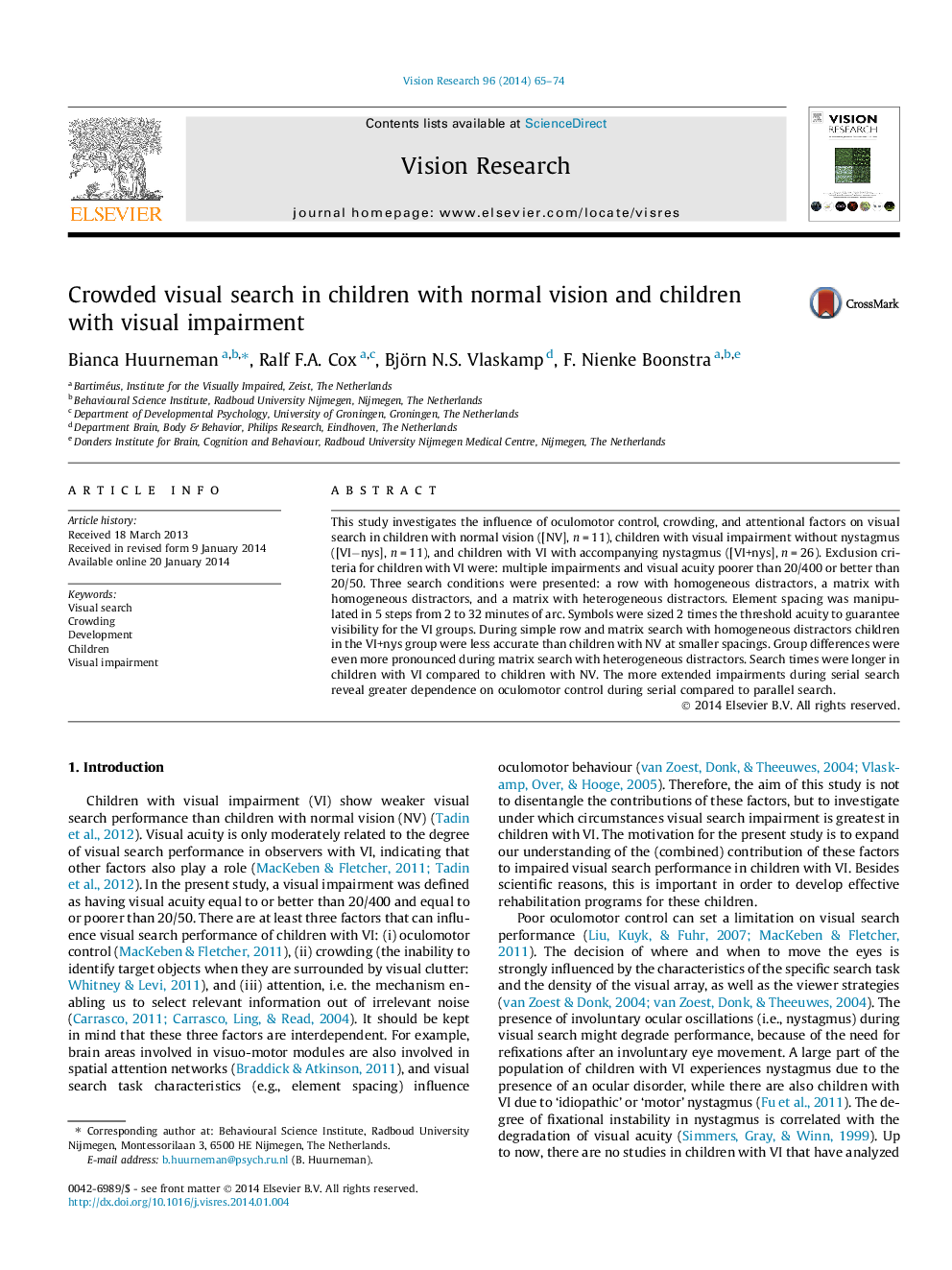| Article ID | Journal | Published Year | Pages | File Type |
|---|---|---|---|---|
| 6203465 | Vision Research | 2014 | 10 Pages |
â¢Children with visual impairment show longer search times compared to children with normal vision.â¢Oculomotor control plays a key role in crowded visual search.â¢Crowding effects are task dependent and stronger during serial than parallel search.
This study investigates the influence of oculomotor control, crowding, and attentional factors on visual search in children with normal vision ([NV], n = 11), children with visual impairment without nystagmus ([VIânys], n = 11), and children with VI with accompanying nystagmus ([VI+nys], n = 26). Exclusion criteria for children with VI were: multiple impairments and visual acuity poorer than 20/400 or better than 20/50. Three search conditions were presented: a row with homogeneous distractors, a matrix with homogeneous distractors, and a matrix with heterogeneous distractors. Element spacing was manipulated in 5 steps from 2 to 32 minutes of arc. Symbols were sized 2 times the threshold acuity to guarantee visibility for the VI groups. During simple row and matrix search with homogeneous distractors children in the VI+nys group were less accurate than children with NV at smaller spacings. Group differences were even more pronounced during matrix search with heterogeneous distractors. Search times were longer in children with VI compared to children with NV. The more extended impairments during serial search reveal greater dependence on oculomotor control during serial compared to parallel search.
